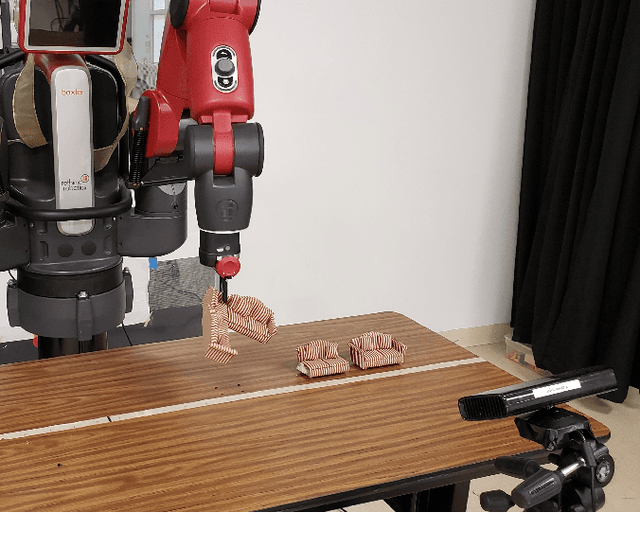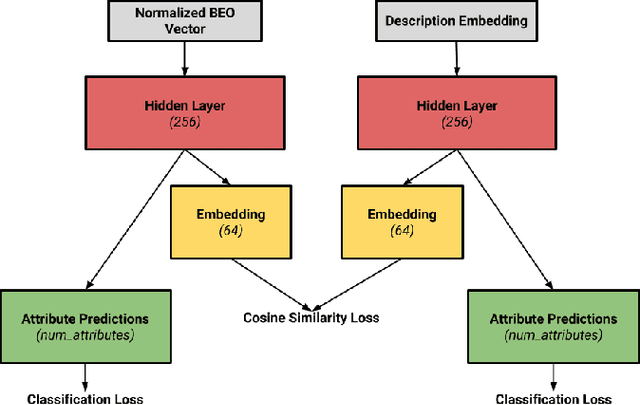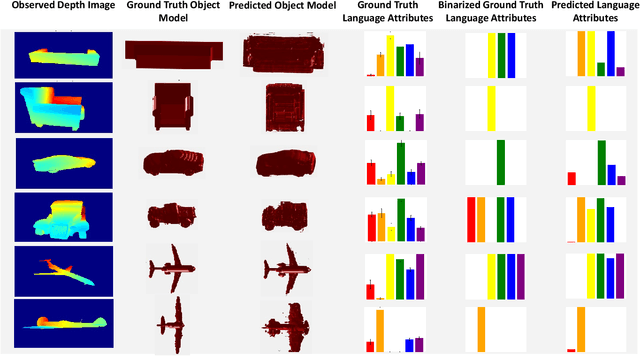Grounding Language Attributes to Objects using Bayesian Eigenobjects
Paper and Code
May 30, 2019



We develop a system to disambiguate objects based on simple physical descriptions. The system takes as input a natural language phrase and a depth image containing a segmented object and predicts how similar the observed object is to the described object. Our system is designed to learn from only a small amount of human-labeled language data and generalize to viewpoints not represented in the language-annotated depth-image training set. By decoupling 3D shape representation from language representation, our method is able to ground language to novel objects using a small amount of language-annotated depth-data and a larger corpus of unlabeled 3D object meshes, even when these objects are partially observed from unusual viewpoints. Our system is able to disambiguate between novel objects, observed via depth-images, based on natural language descriptions. Our method also enables view-point transfer; trained on human-annotated data on a small set of depth-images captured from frontal viewpoints, our system successfully predicted object attributes from rear views despite having no such depth images in its training set. Finally, we demonstrate our system on a Baxter robot, enabling it to pick specific objects based on human-provided natural language descriptions.
 Add to Chrome
Add to Chrome Add to Firefox
Add to Firefox Add to Edge
Add to Edge